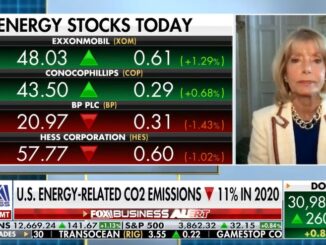
Much has been written in recent years about the sweeping environmental benefits natural gas has provided to the United States since the advent of the Shale Revolution at the end of the 20th century. While renewables like wind and solar have played a role, there is no question that the U.S. has been able to turn back the clock in its greenhouse gas emission to levels not seen since the early 1990s thanks mainly to the ability of the country’s abundant and cheap natural gas to displace coal in power generation.
Indeed, according to the U.S. Energy Information Administration, coal-fired power generation has been cut in half since 2010, while power generated by natural gas generation has risen by about 70%. The result is that, as the Biden Administration takes the U.S. back into participation in the Paris Climate Accords, the country has already met its goals under that agreement through 2025.
Other countries have witnessed the success of this approach and are beginning to emulate it. The most consequential of those in terms of the potential impact to the global emissions profile is China, which is in the midst of a national program to displace much of its coal-fired generation with renewables and natural gas. U.S. exports of liquefied natural gas derived mainly from massive shale plays like the Marcellus Shale, the Haynesville Shale and the Permian Basin will play a large role for many years in facilitating such programs for countries that do not possess scalable natural gas resources of their own.
Smaller nations have their own goals to meet under the Paris Accords, and are moving in the same direction. Once such country is Guyana, whose government recently embarked on a plan to take advantage of its new-found abundance of natural gas now being produced from massive offshore fields being developed by a consortium led by ExxonMobil XOM .
At the beginning of 2021, the administration of Guyanese President Irfaan Ali announced that the site of the abandoned Wales Estate sugar processing plant outside of the national capital city of Georgetown would be used as the site of a new natural gas-to-shore facility. That facility will process large volumes of natural gas coming onshore via pipeline from the Exxon Consortium’s development in the prolific Stabroek block in the deep waters off the northern coast of the country.
A power plant planned for the site will ultimately generate electricity fueled by the natural gas. Interestingly, in Guyana, the gas will lower emissions as it does in the U.S. and China, but not by displacing coal-fired electricity, which is not commonly used in this part of the world. Instead it will displace power plants fired by fuel oil, which has been a traditional fuel source in the region and throughout the Caribbean.
Although it uses much of its produced natural gas to provide power to its own facilities at Stabroek, ExxonMobil said recently that it can deliver the 50 million cubic feet of natural gas per day needed to supply the power plant at Wales. In a recent interview, ExxonMobil Guyana President Alistair Routledge told OilNow that “We’ve reported recently with the 18 discoveries to date we’re approaching 9 billion oil equivalent barrels of resource in the country. Now of that, a little bit less than 20% probably now is what we think is gas.” He went onto add that “…we’ve identified and are certain that we can deliver the kind of volumes that are needed to support a gas-powered plant. So, about 50 million cubic feet per day of gas.”
Understanding that they have little case to be made related to the environment, opponents of oil development in the country have focused their opposition to the Wales project by making specious claims about the finances of the country, which stands to benefit immensely from Stabroek and other offshore oil developments. Tom Sanzillo, Director of financial analysis at the Institute for Energy Economics and Financial Analysis (IEEFA) recently told a public hearing that “…I have to be frank about this, the way the contracts were negotiated for this oil endeavour gives me no confidence that the country has any ability to negotiate the best price for a pipeline and other infrastructure to bring gas to shore.”
But Sanzillo’s remarks stand in stark contrast to a study conducted by Wood Mackenzie that showed that the revenue sharing agreement between the Consortium and Guyana ranks well within the norm for such international agreements governing the development of oil and gas resources. It also conflicts with a study by the International Monetary Fund projecting that, thanks to oil development, the Guyanese economy stands to grow by 86% by the end of 2021.
Indeed, as I have chronicled over the past couple of years, the mineral resources beneath Stabroek and other offshore blocks represents an opportunity to literally transform the economy of this tiny nation of just around 800,000 people. And now, thanks to its new abundance of natural gas, it stands to transform the country’s greenhouse gas emissions footprint as well.
Forbes



